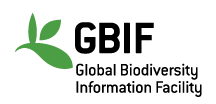
The Global Environment Facility (GEF) is a multilateral environmental fund that provides grants and blended finance for projects related to biodiversity, climate change, international waters, land degradation, persistent organic pollutants (POPs), mercury, sustainable forest management, food security, and sustainable cities in developing countries and countries with economies in transition. It is the largest source of multilateral funding for biodiversity globally and distributes more than $1 billion a year on average to address inter-related environmental challenges.

The Global Biodiversity Information Facility (GBIF) is an international organisation that focuses on making scientific data on biodiversity available via the Internet using web services. The data are provided by many institutions from around the world; GBIF's information architecture makes these data accessible and searchable through a single portal. Data available through the GBIF portal are primarily distribution data on plants, animals, fungi, and microbes for the world, and scientific names data.
The Catalogue of Life is an online database that provides an index of known species of animals, plants, fungi, and microorganisms. It was created in 2001 as a partnership between the global Species 2000 and the American Integrated Taxonomic Information System. The Catalogue is used by research scientists, citizen scientists, educators, and policy makers. The Catalogue is also used by the Biodiversity Heritage Library, the Barcode of Life Data System, Encyclopedia of Life, and the Global Biodiversity Information Facility. The Catalogue currently compiles data from 165 peer-reviewed taxonomic databases that are maintained by specialist institutions around the world. As of September 2022, the COL Checklist lists 2,067,951 of the world's 2.2m extant species known to taxonomists on the planet at present time.

Peucedanum is a genus of flowering plant in the carrot family, Apiaceae. Peucedanum boasts a global presence with diverse spread of morphological features. Peucedanum species are characterized by dorsally compressed mericarps, slightly prominent dorsal ribs, narrowly winged lateral ribs, and a broad commissure. However, the vast diversity of morphology, fruit forms, and phytochemical production makes classifying species in the Peucedanum challenging. Historically relevant in traditional medicine, Peucedanum's taxonomic complexity arises from its extensive diversity.
The World Register of Marine Species (WoRMS) is a taxonomic database that aims to provide an authoritative and comprehensive list of names of marine organisms.

Afrosciadium is a genus of flowering plants belonging to the carrot family, Apiaceae. It was split from the genus Peucedanum in 2008 by P.J.D. Winter, et al.

Afrosciadium afrum is a member of the carrot family, Apiaceae. It is a perennial tuberous herb native to subtropical regions of South Africa and Lesotho.

Afrosciadium magalismontanum is a member of the carrot family, Apiaceae. It is a perennial tuberous herb native to subtropical regions in eastern South Africa and Eswatini. It has a tall, narrow stem which divides into multiple evenly-spaced branches near the top, with each branch sporting a cluster of small yellow flowers at its end.

Afrosciadium dispersum is a member of the carrot family, Apiaceae. It is a perennial tuberous herb native to tropical mountains in South Sudan, northern Uganda, and southwestern Tanzania.

Afrosciadium englerianum is a member of the carrot family, Apiaceae. It is a perennial tuberous herb, endemic to the Aberdare Mountains in Kenya.

Afrosciadium eylesii is a member of the carrot family, Apiaceae. It is a perennial tuberous herb native to southeastern Africa, from the Democratic Republic of the Congo and Tanzania to Zimbabwe and Mozambique.

Afrosciadium friesiorum is a member of the carrot family, Apiaceae. It is a perennial tuberous herb, endemic to Mount Kenya.

Afrosciadium gossweileri is a member of the carrot family, Apiaceae. It is a perennial tuberous herb, endemic to subtropical Angola.

Afrosciadium lundense is a member of the carrot family, Apiaceae. It is a perennial tuberous herb, endemic to subtropical Angola.

Afrosciadium lynesii is a member of the carrot family, Apiaceae. It is a perennial tuberous herb native to southern tropical Africa.
Afrosciadium natalense is a member of the carrot family, Apiaceae. It is a perennial tuberous herb, endemic to the KwaZulu-Natal province of South Africa.

Afrosciadium nyassicum is a member of the carrot family, Apiaceae. It is a perennial tuberous herb native to central Africa.
Afrosciadium platycarpum is a member of the carrot family, Apiaceae. It is a perennial tuberous herb, endemic to southeastern South Africa.

Afrosciadium rhodesicum is a member of the carrot family, Apiaceae. It is a perennial tuberous herb, endemic to the Mount Nyangani region along the border between eastern Zimbabwe and western Mozambique.

Rhynchospora rugosa, known by the common name of claybank beaksedge, is a member of the sedge family, Cyperaceae. It is a perennial herb, native to Central and South America.
















